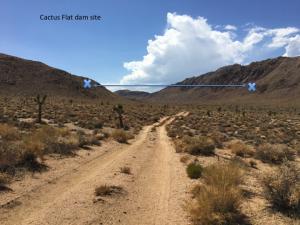Water has been a controversial subject in the Eastern Sierra since 1913 when snowmelt from the Sierra Nevada mountains first flowed through the Los Angeles Aqueduct to Los Angeles. In 1941 Los Angeles Department of Water and Power (LADWP) created Crowley Lake and started diverting water from Mono Lake. In 1970, it added a second "barrel" to the LA Aqueduct and began groundwater pumping to keep both aqueducts filled. Each time LADWP extracts more water from the Eastern Sierra, there is environmental damage. For decades, residents in the Eastern Sierra have been fighting to keep water in the region and fighting for mitigations from the impacts of the loss of water; surface and groundwater. Despite some wins, less water stays in the Eastern Sierra.
Indian Wells Valley Wants Our Water
The Indian Wells Valley groundwater basin is in serious over draft. Per the 2014 Sustainable Groundwater Management Act, Indian Wells Valley Groundwater Authority (IWVGA) was required to prepare a Groundwater Sustainability Plan that would resolve the problem and be sustainable by 2040. Their preferred solution could lead to more water being squeezed out of the Eastern Sierra. Read on...
Keep Long Valley Green
 Keep Long Valley Green (KLVG) is another conflict over water with the Los Angeles Department of Water and Power (LADWP). In 2018 presented the lessees in Long Valley and Little Round Valley a contract that provide no water for irrigation. The water used for irrigation has re-established wetlands in the valley and sustained Bi-state Sage Grouse in Long Valley since 1941 when LADWP created Crowley Lake. Read on...
Keep Long Valley Green (KLVG) is another conflict over water with the Los Angeles Department of Water and Power (LADWP). In 2018 presented the lessees in Long Valley and Little Round Valley a contract that provide no water for irrigation. The water used for irrigation has re-established wetlands in the valley and sustained Bi-state Sage Grouse in Long Valley since 1941 when LADWP created Crowley Lake. Read on...
Haiwee Hydro-Pumped Storage
 In March 2019 Premium Energy has submitted a preliminary application to the Federal Energy Regulatory Commission (FERC) proposing to put a hydro-pumped storage project at LADWP's North Haiwee Reservoir. With this project a lower reservoir would be created on the north side of the existing North Haiwee reservoir. The upper reservoir would be at McCloud Flat or at Cactus Flat. Read on...
In March 2019 Premium Energy has submitted a preliminary application to the Federal Energy Regulatory Commission (FERC) proposing to put a hydro-pumped storage project at LADWP's North Haiwee Reservoir. With this project a lower reservoir would be created on the north side of the existing North Haiwee reservoir. The upper reservoir would be at McCloud Flat or at Cactus Flat. Read on...
Lower Owens River Project
 The Lower Owens River Project (LORP) is a large-scale riverine habitat restoration project that is a mitigation described in the 1991 Environmental Impact Report to offset the damage incurred to surface vegetation when Los Angeles Department of Water and Power (LADWP) pumped groundwater in the Owens Valley from 1970-1990 to fill the second barrel of the Los Angeles Aqueduct (LAA). The project was further detailed in the 1997 Memorandum of Understanding (MOU) between LADWP and Inyo County also known as the Long Term Water Agreement. The Sierra Club, the Owens Valley Committee, State Lands Commission, and CDFW are parties to that MOU.
The Lower Owens River Project (LORP) is a large-scale riverine habitat restoration project that is a mitigation described in the 1991 Environmental Impact Report to offset the damage incurred to surface vegetation when Los Angeles Department of Water and Power (LADWP) pumped groundwater in the Owens Valley from 1970-1990 to fill the second barrel of the Los Angeles Aqueduct (LAA). The project was further detailed in the 1997 Memorandum of Understanding (MOU) between LADWP and Inyo County also known as the Long Term Water Agreement. The Sierra Club, the Owens Valley Committee, State Lands Commission, and CDFW are parties to that MOU.
This project put water back into the Owens River from the intake of the LAA from Aberdeen to the Owens Lake (62 miles). This section of river had been dry since 1941. Water first started flowing into the Owens Lake in 2008. The EIR and MOU define river flows and requirements for creating wetlands and woody recruitment along the river. Read more...